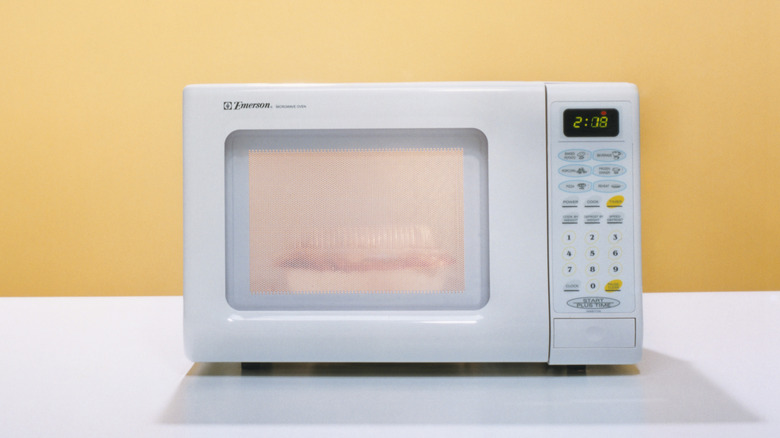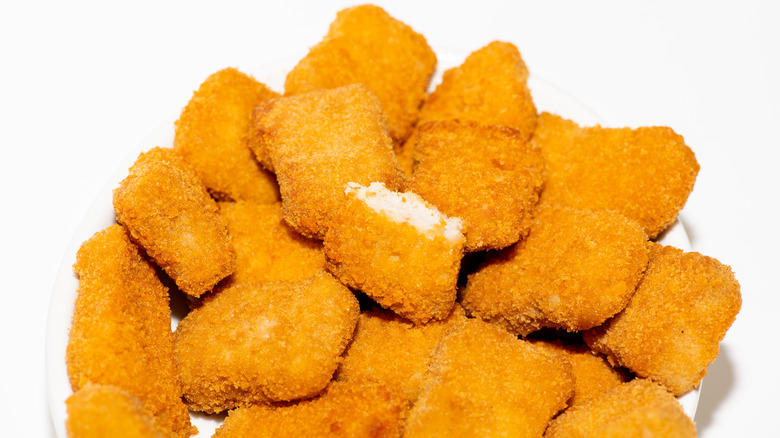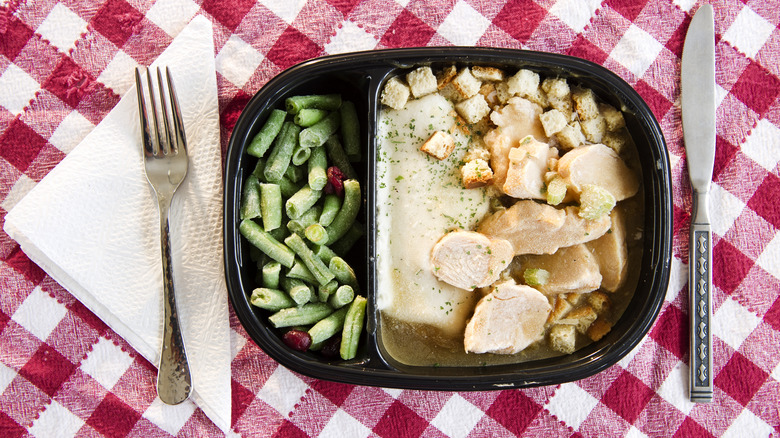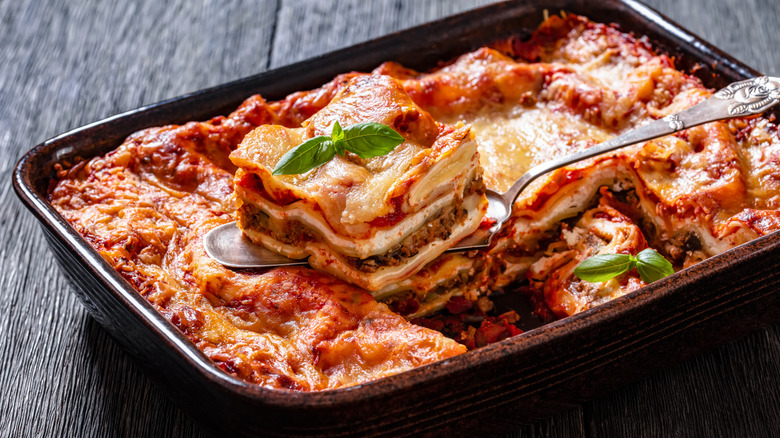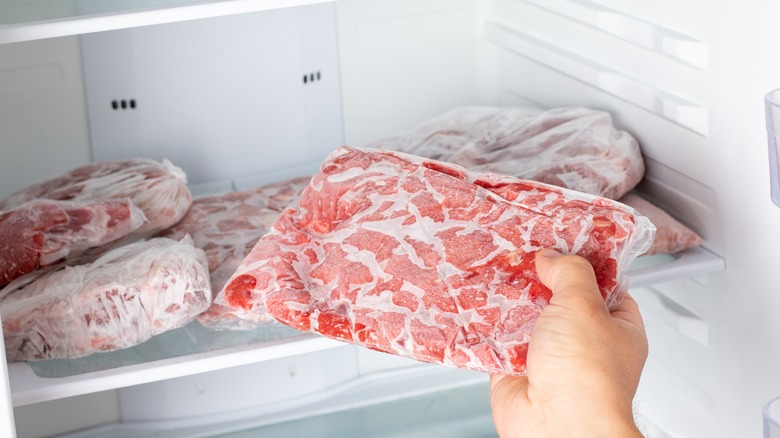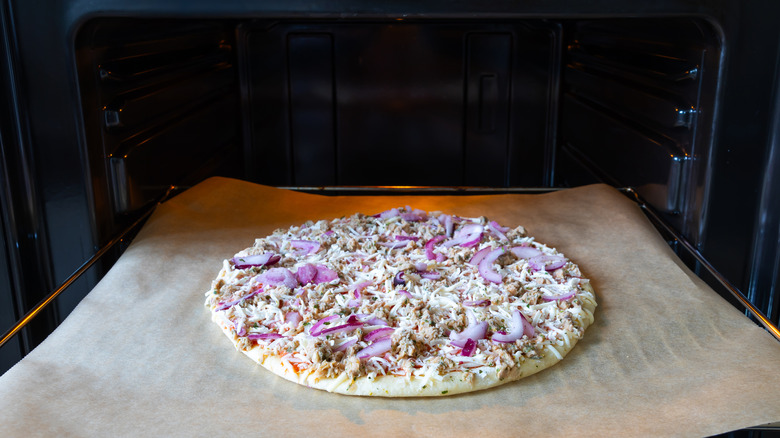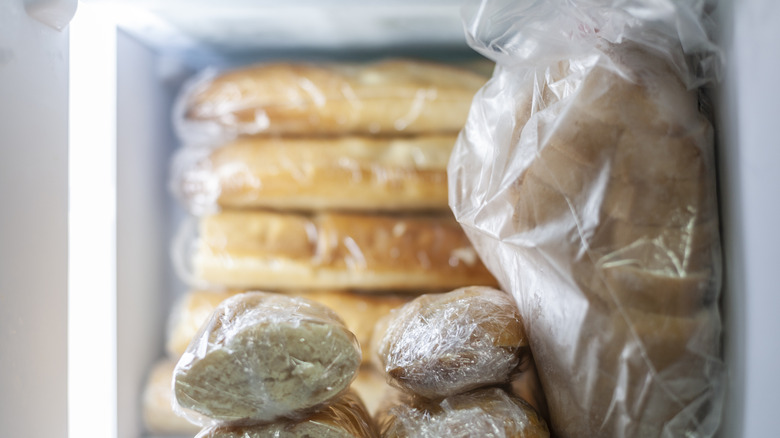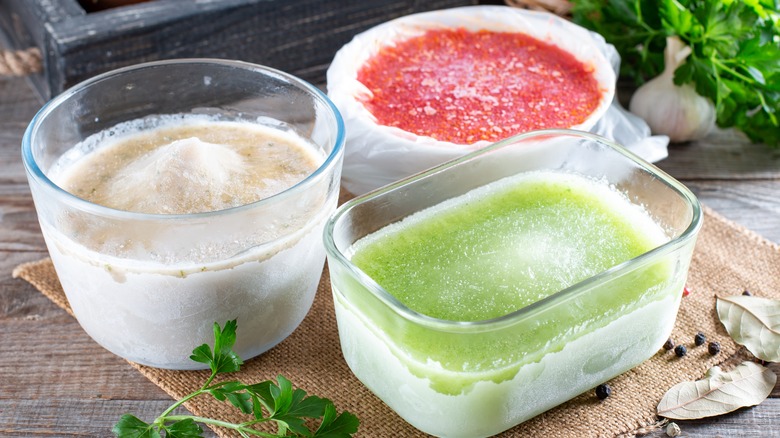Skip The Microwave When It Comes To These Frozen Foods
While microwaves might be one of the fastest and easiest ways to prepare your next meal, it isn't always the most effective method of heating up food — especially when it's starting from frozen. Freezing your food or grabbing some staples on your next grocery trip to have on hand makes cooking and meal prepping during the week easier, but it might also mean that your microwave is off-limits depending on what you're planning to make.
Though certain foods taste perfectly fine when prepared in the microwave (think popcorn, reheating of leftovers, or fast snacks like nachos or quesadillas) there are others that should be avoided at all costs. While these foods may not only taste questionable when prepared in the microwave, this cooking method can sometimes also lead to detrimental health concerns. Learn more about which foods you should avoid microwaving — and the cooking methods you can use instead.
Chicken nuggets
There isn't a clear answer if you're looking to heat frozen chicken nuggets in your microwave. While pre-cooked nuggets are typically a safe bet, they may turn out soggy when cooked in the microwave instead of a traditional oven. As microwaved nuggets heat up, they release steam which can cause the breading and the meat to separate and get soggy. To keep them crisp, try heating them up in an air fryer or in the oven instead. But if the microwave is your only option, place a few paper towels down on the plate before heating to absorb excess moisture.
Raw chicken nuggets, on the other hand, shouldn't be prepared in the microwave. Like all raw meat, cooking raw chicken nuggets in the microwave can lead to uneven cooking and result in food-born illnesses like salmonella. Be sure to check the package before preparing the nuggets to ensure you're using a safe cooking method either way.
Uncooked frozen meals
It's best to steer clear of heating up any raw foods from frozen in the microwave. Because microwaves heat up food unevenly, heating a completely frozen raw dish can create bacteria. This can allow E. coli or salmonella to grow, leading to sometimes serious illness. If your frozen meal has microwaving instructions, be sure to follow them closely (including checking the wattage of your microwave). Better yet, only pick up frozen meals that are precooked (and just require reheating) to avoid any issues altogether.
Also be sure that any frozen meals you put into the microwave – even some of our favorites – are in food-safe containers. Avoid any plastic containers, foam, or plastic film that may release harmful chemicals like BPA or phthalates into your food as it heats up. These chemicals are linked to serious health effects like diabetes, reproductive issues, and obesity. According to the FDA, the container needs to be specifically labeled as microwave safe.
Lasagna
Whether homemade or store bought, frozen lasagna is a delicious and filling meal that freezes especially well and is perfect for busy weeknight dinners. While it is technically safe to cook frozen lasagna directly in the microwave (assuming any meat is precooked), it can often lead to a soggy, soupy mess instead of a beautifully layered pasta dish.
When the lasagna is put into the freezer, all of the liquid in the dish freezes. As it heats in the microwave, the frozen liquids release large amounts of steam that then condenses. This condensation can leave the dish waterlogged and makes everything get soggy — from the noodles to the filling to the cheesy topping. It may also reheat unevenly, leaving the middle cold and underdone while the outside edges are scalding hot. Cooking it in the oven, on the other hand, will instead allow the steam and water to evaporate more easily, creating crispy edges and evenly melted cheese that is sure to be a crowd pleaser.
Burgers, chicken, or other raw meat
There is one main food that almost all experts agree should not be cooked in the microwave: raw meat. Because microwaves don't heat food evenly, cooking frozen, raw meat is a dangerous game whether it's beef, pork, or chicken. Think about when you cook a frozen lasagna in the microwave; often, the outside edges are piping hot while the center is still frozen solid. The same principle applies to frozen meat – the microwave infiltrates about 1 inch into the food to accelerate the water molecules and create steam and heat.
But while convenient, this method may result in certain parts of the meat being cooked to a safe temperature, and other pockets that are still underdone (or even raw). Not only does this create a final dish that may not taste great, but it can lead to the consumption of some serious bacteria like campylobacter, yersinia, and salmonella that causes food poisoning.
Pizza
Frozen pizzas are the perfect solution when you want something fast and affordable. While it may be tempting to pop this delicious dish into the microwave for an indulgent bite in just a few minutes, doing so will likely result in soggy, unappetizing crust (without the addition of a preheated, browning dish).
As the pizza heats up in the microwave, the frozen water molecules trapped in the crust, sauce, and cheese begin to release steam. The cool air in the microwave leads the steam to condense, which gets trapped and leads to the soggy crust. If the pizza has raw meat toppings, you should especially avoid the microwave. Even if your frozen pizza has microwaving instructions on the box (like some popular brands), we recommend heating it in the oven for a crisper, more delicious crust. Either way, check that the pizza is heated to an appropriate internal temperature of at least 160 F throughout for added peace of mind.
Bread
While popping your leftover bread into the freezer may prevent pesky mold from forming and help you minimize food waste, reheating it in the microwave is going to result in a disappointing meal. While it most likely won't lead to any of the food-born illnesses you could ingest from heating frozen raw meat, reheating bread in the microwave agitates thewater molecules. The bread's starch molecules then bond to the water, making the bread soggy.Like all other food in the microwave, it may also reheat unevenly.
Conversely, bread heated in the microwave can also become hard and develop a stale taste. While it may be tempting to toss your leftover loaf into the freezer when it's on its last leg, it will also help the taste later on if you freeze it when it's fresher. That way, when you thaw and reheat, the bread still has the moisture it needs to help prevent that hard, tough texture. To avoid all of these common pitfalls, try defrosting the bread first and reheating it in the oven or toaster for a crisper final result.
Soup
While heating up frozen soup in the microwave is technically safe, it's not the best method. Using the microwave will not only take a while, but it can also lead to the soup popping all over the inside of your microwave and splattering the top, sides, and turntable. Because soup is a mix of water and chunkier ingredients like vegetables, meat, rice, or pasta, pockets of water get trapped when reheating. As the soup warms in the microwave, the trapped water doesn't have any way to release steam. This can eventually lead to mini explosions that not only create a mess, but can lead to dangerous burns.
If possible, it's best to thaw your frozen soup overnight in the fridge to make the microwave process faster easier, and mess-free. When pulling your frozen soup straight out of the freezer to eat immediately, consider slowing thawing and heating it in a saucepan over low heat on the stovetop instead.
